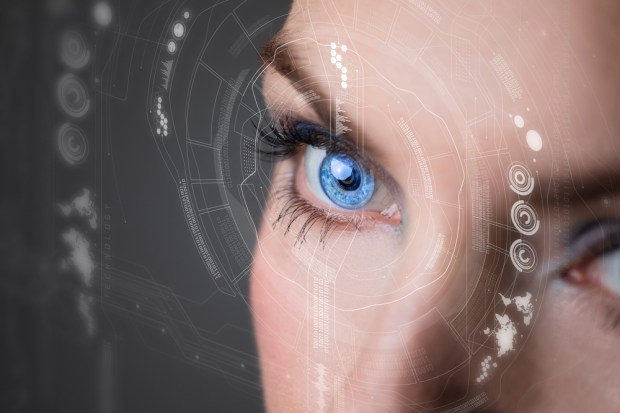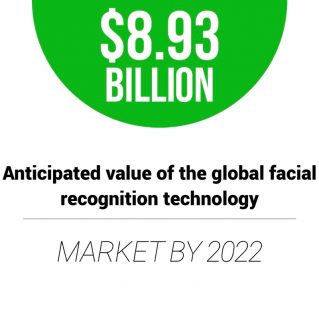How Iris Scans Win When Facial Recognition Fails

Is facial recognition tech up to the identical twin challenge? Not exactly, says University of Notre Dame computer science and engineering professor Kevin Bowyer. It’s a topic that Bowyer chatted about with PYMNTS for the latest issue of the Digital Identity Tracker™. He discusses the shortcomings of facial recognition and the strengths of other systems — including iris scanners, which were recently used to enable clean elections in Somaliland.
In the fast-evolving world of biometrics, some solutions are proving more effective than others. Facial recognition technology is becoming an increasingly popular authentication method on mobile phones, but it still has a long way to go.
Kevin Bowyer, the Schubmehl-Prein professor of computer science and engineering at the University of Notre Dame, has written multiple reports on biometric technology, and pointed out that facial recognition often has difficulty distinguishing between identical twins. In the same vein, Mashable released a video in November 2017 that showed identical twin siblings successfully unlocking an iPhone X although one had not registered his face to the device.
For the April Digital Identity feature story, PYMNTS spoke with Bowyer about how the tech stacks up against other biometric solutions, and the factors that will ultimately drive consumer adoption.
Double-Checking for Twins
While there’s been growing demand for facial recognition technology, its use comes with its own set of pros and cons. It works by capturing a user’s facial features and verifying them against those stored in a database. This can be useful in identifying suspicious individuals with criminal records, but the technology has its shortcomings in other scenarios.
When it comes it comes to distinguishing identical twins, for instance, the technology tends to fall short, Bowyer said. Telling one twin from another gets more difficult the younger the siblings are, as younger twins have developed fewer features like moles or skin tags to help set them apart.
“Younger twins are harder than older twins,” Bowyer said. “The details of the face are going to be useful in telling them apart.”
This challenge is something that could come back to haunt industries that turn to facial recognition for authentication, including airports and airlines. A facial recognition pilot recently kicked off at the Orlando International Airport, allowing passengers to board planes without boarding passes after having their photos taken.
This type of solution could still be duped, Bowyer said. If the system captures an image that is just blurry enough or that doesn’t use the right level of lighting, an “evil twin” could board a flight pretending to be an identical sibling.
“With the quality of control and the quality of lighting that you typically see in an airport when doing border transit, and [if] I really needed to tell Twin A from Twin B, facial recognition would make me nervous,” he explained.
Properly guarding against the “evil twin” scenario requires a twin set of biometric safeguards. This means having multi-factor authentication (MFA) in place, like facial recognition and another biometric option that is unique to individuals — even identical twins.
“If you wanted to reliably tell all twins apart all the time under a broad set of conditions, you would want to use iris or fingerprint [authentications],” Bowyer said.
Multi-factor authentication safeguards could prove especially useful in preventing an “evil twin” from accessing a sibling’s identity for mobile-based document verification purposes. For example, an “evil twin” could use his sibling’s smartphone to take a deceptive selfie, but the twin would first need to access his sibling’s smartphone to take that selfie. If a biometric safeguard like a fingerprint or iris scan is in place, the “evil twin” would find the masquerade difficult to pull off.
This makes two-factor authentication a necessity for many authentication scenarios.
Securing Voter Integrity
While facial recognition can fall short in telling one twin from another, iris scans have proven to be highly effective as an authentication solution. Bowyer’s own research on the topic was recently used to ensure clean elections in the independent African state of Somaliland.
In fact, last year’s Somaliland presidential election relied on iris recognition technology developed by Bowyer and his team. He was approached to help reduce the number of duplicate voter entries.
“They were unhappy with their ability to de-duplicate the voter registration list,” Bowyer noted.
He developed an iris-based solution that helped automate the voter registration process and significantly reduce the number of duplicate entries, which previously tallied between 20 and 30 percent. The solution scanned registered voters’ eyes to verify their identities before they cast their votes, resulting in successful November 2017 elections. The results have been upheld by the Somaliland officials and international observers.
Back in the U.S., the subject of voter fraud activity has become a contentious political issue. Earlier this year, the Trump administration dissolved a controversial voter fraud commission that was charged with investigating allegations of “widespread voter fraud” in U.S. elections.
Though allegations of voter fraud have spiked, Bowyer does not believe the U.S. will adopt a biometric-based solution for voter authentication anytime soon.
“Even now, for the people who actually investigate fraud, the actual number of instances is fairly small, and it isn’t enough to imagine the vote is being swung,” Bowyer said.
Given the low rate of voter fraud, the cost involved in installing a biometric system for a nation the size of the U.S. seems like a tall order, he added.
“I don’t see that happening in the near future in the U.S.,” Bowyer said.
The ID Convenience Factor
Whether biometric offerings are in place to check for identical twins or to guard against potential duplicate votes, Bowyer believes consumers will gravitate toward the most convenient option.
“Convenience to the end user is key,” he said.
For a parent walking into a shopping mall holding her child’s hand, having the ability to use a fingerprint reader that quickly authorizes a food court purchase would be highly appealing.
“If they could touch their thumb print or trace a signature on a surface and never let go, you’ve offered them a very attractive option,” Bowyer added.
He remembers seeing shoppers pay for groceries using Pay By Touch fingerprint verification at the Piggly Wiggly grocery store chain in South Carolina. The store stopped offering the biometric solution after the company behind the technology folded, but the lesson highlights how consumers think about biometrics. The solution should be secure, convenient and easy enough to adopt.
“If it’s better for them than what they do now, they will move toward it,” Bowyer said.
Download the latest issue of the Digital Identity Tracker™.
About the Tracker
The Digital Identity Tracker™, sponsored by Jumio, is a forum for framing and addressing key issues and trends facing the entities charged with efficiently and securely identifying and granting permission to individuals to access, purchase, transact or otherwise confirm their identities.

